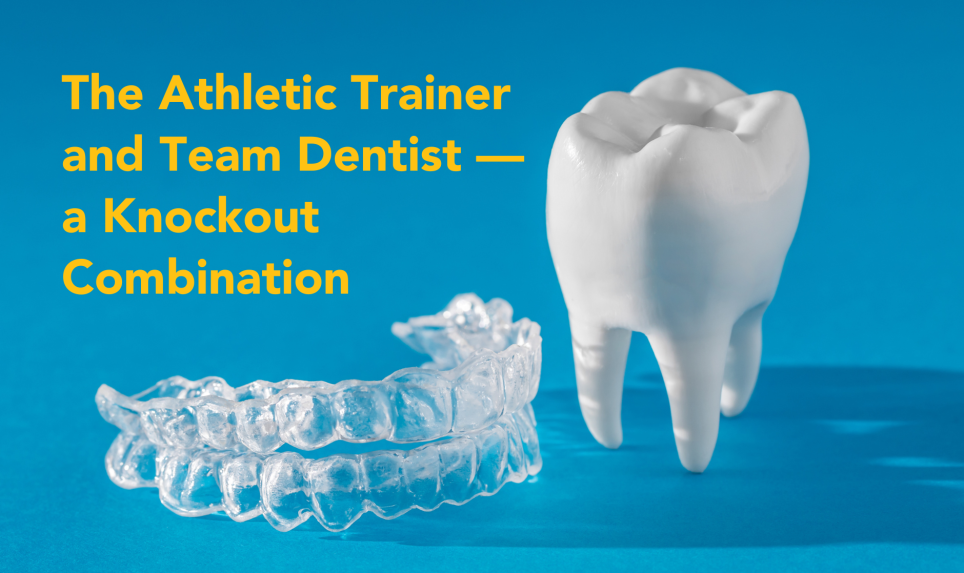Athletic Trainers (ATs) and team dentists have an important relationship. When an injury occurs, the AT is usually the first medical professional on the scene. They assess and determine the injury, the cause, and how to manage it. The team dentist helps the AT’s athletes by fabricating mouthguards to protect their athletes’ teeth and then, in the event of a dental or oral cavity injury, the team dentist is contacted to assess and help restore the athlete’s oral health. The objective is to get the athlete back into athletic play safely and promptly.
There are many dental injuries where time is of the essence, for example, an avulsed (knocked-out) tooth. When a tooth is avulsed, the tooth should be re-implanted (placed back in the socket) within 30 minutes to give it the best chance at survival. The AT, being on-site, gives the athlete a great advantage by helping to manage the avulsed tooth quickly and efficiently. The AT is able to contact the team dentist who can then offer insight on how to further manage the injury at the scene or make arrangements for the athlete to be seen in the office. The AT also likely has a product called, “Save-A-Tooth” that enables the tooth to be transported to the dental office without having the tooth dry out.
One of the best ways to prevent a dental injury is wearing a mouthguard. There are many different types of mouthguards on the market. Step into your local sporting goods store and there may be 50 different types! Which is best for my athlete?
There are three main types of mouthguards:
- Type 1- a stock mouthguard
- Type II- boil and bite mouthguard
- Type III- a custom fitted mouthguard
Type I mouthguards are the least expensive, easiest to replace, and most of the time, meet the minimum standard for sports that require a mouthguard. However, Type I do not fit well, they require the athlete to keep biting them to hold them in place, and really do not contour to the individual’s teeth. This can also make it harder to breathe and speak.
Type II mouthguards are a little better in that the athlete can heat them in hot water, and then self-mold it to their dentition. They can stay in the mouth a little better but also rely on the athlete to hold them in with their teeth or cheeks and also may compromise speaking and breathing. These are a little more expensive than a Type I.
Type III mouthguards are custom fitted by a dentist. These are created by an impression or a digital scan of the athlete’s dentition and fabricated on a stone or 3D printed model. These fit very well as they adapt to the athlete’s teeth contours, so speaking, breathing, and ability to stay in the mouth is much better than both Type I and Type II mouthguards. Many international sports dentistry organizations, including the Academy for Sports Dentistry, advocate these for our athletes.
Athletic trainers and team dentists should be well prepared in managing dental trauma. For more information on sports dentistry, see www.academyforsportsdentistry.org.
Remember, the best way to manage dental trauma is to not get it in the first place! Wear your mouthguard! Download NATA's Dental Injuries infographic.
